It’s almost Christmas and thankfully for many pilots in Europe we have escaped the worst of the winter weather so far. Historically the worst of the weather hits us from Christmas onwards until around March so now is a great time for you to stop and think about how to enjoy the most of your winter flying.
In this article you will get some great tips on preparing yourself, your aircraft and how to be ready for some of the common challenges that comes with snow, ice and cold weather.
Enjoying Winter flying and some beautiful skies
In our experience, some of the best flying happens over the winter time. While you might be challenged by snow and ice, there are also perfect days with blue skies, cold dense air and some of the best views you will ever see from an aircraft.
By taking a little time to prepare yourself, your aircraft and the flight itself you will get to enjoy some truly memorable flights. We have prepared lots of useful information to make sure that you can make the most of the coming months.
Be Ready….
To get the most enjoyment out of any flight its important to prepare and “Be Ready” before going anywhere near the cockpit. While you might have a well developed and perfectly set out pre-flight routine, there are extra things to consider during the winter time. At EASA we are continually reviewing accidents and other occurrences so you can learn the lessons from others as easily as possible.
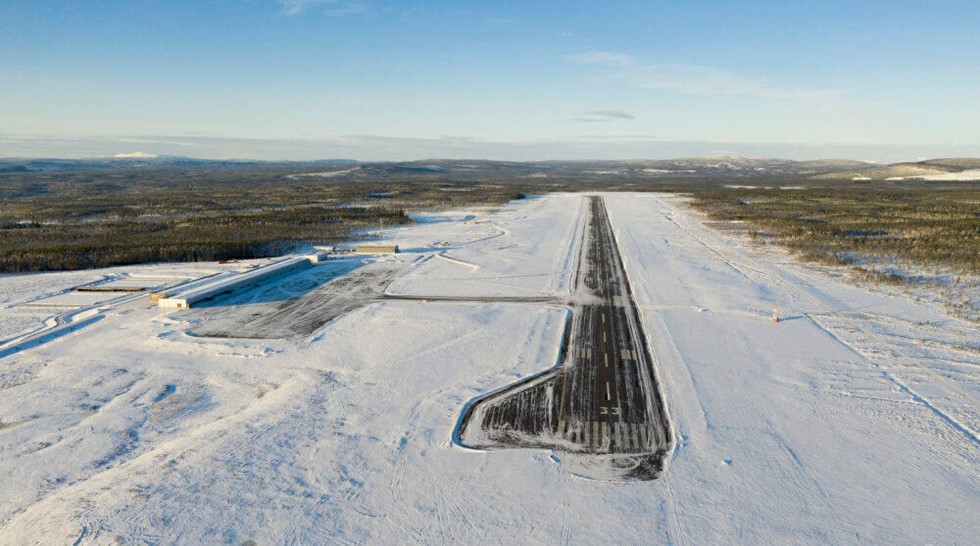
Pilot Ready
The first step is to prepare yourself as the pilot in command. Every flight you take responsibility for your own safety and that of your passengers and everyone on the ground. With good pre-flight planning and preparation you can enjoy the flight ahead with peace of mind that you covered as many bases as possible.
During the winter you should pay special attention to the following points:
- Weather and routing (ceilings, visibility, wind).
- The landscape for VFR navigation might be totally different to what you’re used to in the summer. Lots of things change colour and features you might use for navigation might not be as easy to see as you might expect.
- Local airfield conditions (departure, destination, possible alternates), also check webcams where available to compare the real conditions with the forecasts.
- Take a little extra time before and after your flight for a good walk-around and tie-down.
- Dress for the occasion – there is no such thing as bad weather, just the wrong clothing. Don’t forget a hat, gloves, boots and also sunglasses – remind your passengers to do the same. When you are warm, even your walk-around will be much more comfortable and less tempted to skip any important steps.
- Don’t forget of course, extra clothing means extra weight so add some extra 5kg per person to the mass and balance calculations.
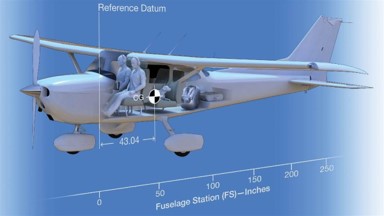
Aircraft Ready
It’s also important to ensure that your aircraft is also in a good condition to fly in winter conditions. We have lots of great tips for you that will help reduce the risk of something bad or unexpected happening during the flight. Many of these are lessons from accidents so while some of them might sound obvious they have caused a problem for someone on a cold day. Our goal is to make sure every pilot can “fly another day”.
Hangered or in the Open:
If your aircraft is tied down outside during the winter there are some important things to pay attention to.
- The additional weight of the ice or snow adds to the total weight of the aircraft, increasing the lift required for the aircraft to take off.
- The formation of frost, ice or snow also changes the airflow over the wing, reducing the overall lift a wing can produce.
Make sure to remove snow and ice build up and fly a clean aircraft and don’t forget your propeller.
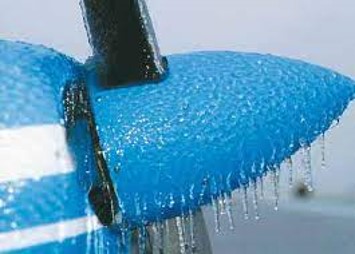
Deicing Tips:
Letting the sun do the work is your cheapest and easiest option but of course the conditions might not always make that possible.
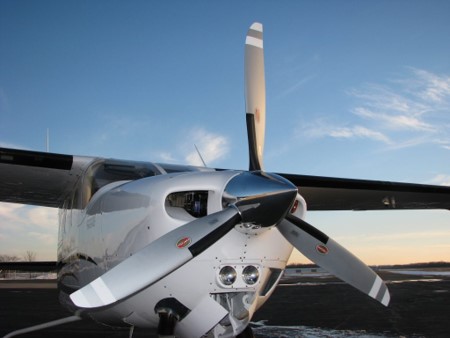
Here are some important De-icing tips:
- Always wipe down any left-over moisture to prevent refreezing.
- Don’t use hot water, depending on the temperature it may refreeze.
- Take care of critical places like the pitot tube, static port and windscreen.
Perform a Thorough Walk-Around:
Your walk-around is vital to ensure that the aircraft is in good condition for the flight ahead. Check out this video from Thomas at CAA Norway with some great tips for a good walk-around.
During the wintertime there are some other things you should pay specific attention to:
- Inspect the fuel system for water/ ice contamination before and after each flight. Water in the system can freeze and block the fuel flow. It can also rupture fuel lines and components.
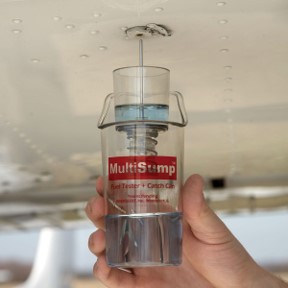
- Keep fuel tanks filled as much as possible/as applicable to avoid condensation build-up. Be aware of moving a cold aircraft with full fuel tanks into a warm hangar: as cold fuel warms up it expands and possibly overflows on the floor causing a potential fire hazard.
- Check the oil breather tube for ice blockages before starting up. Blockages can pressurise the engine and cause seals to fail or blow the oil cap off resulting in loss of oil and a damaged engine.
Pre-heat (when possible) and start-up tips:
If the engine is cold soaked it will likely be necessary to preheat the engine before start. Often this is done with a small heater and duct work designed to blow warm air into the engine compartment. The preheater is left on for a certain amount of time (usually 10 to 15 minutes) then disconnected and the engine started.
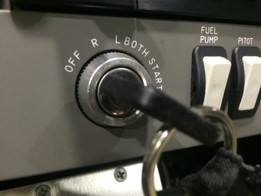
Fuel does not readily vaporise at cold temperatures. This makes starting more difficult.
- Be careful not to overprime when starting your engine. It can be frustrating. Don’t forget to allow for the necessary cool down of the starter between starting attempts.
- Once the engine is started. Keep the idling at recommended idle speed (1000RPM in most cases). Important in cold weather to prevent lead fouling in spark plugs.
- Pay particular attention to the oil pressure gauge after start up. Pressure should be in the green range between 30-60 seconds max. know how your aircraft normally responds and watch for deviations from the norm.
Warming up and checking your engine in flight:
- Allow plenty of time for the engine to warm up. Listen to your aircraft. Does it sound right? If you are flying with a carbureted engine, check for ice accumulation during taxi and after long low rpm operations on the ground.
- Wait for adequate oil temperature before starting the engine run-up.
- Throttling should be slow and precise. Try to avoid high and rapid variations of power. The general rule is to advance the throttle from idle to full power over 3 seconds. Be gentle on your engine.
During flight keep scanning your engine instruments regularly. The oil temperature should be in the green. In general, you don’t want to have high oil temperatures…but running the engine too cool is also dangerous for the engine. Low temperatures might not vaporise the moisture in the oil and cause problems. The oil can then remain contaminated and possibly lead to engine damage.
A little care during approach and landing:
As you get ready for the approach and landing, try to avoid sudden cooling (shock cooling) of the engine. Don’t throttle suddenly to idle for the descent. Engine cooling by sudden idling can lead to cracks in cylinder heads and more. Reduce your power gradually but make sure to keep enough power in the descent.
Ready for the Environment
If you’re ready and so is your aircraft, the next thing to think about is the environment you’ll be flying in. The more prepared you are for what lies ahead, the more you and your passengers will enjoy the flight. Winter brings some very specific challenges but don’t worry we have lots of tips for you.
Some planning and preparation tips:
- Checking NOTAMs is always an important thing to do so that you are ready for anything before the flight.
- Check the opening hours of all aerodromes you plan to fly to, including alternates. Some aerodromes are Prior Permission Required (PPR) so make sure to call ahead if needed.
- Consider if the aerodromes you are planning to use have all the facilities you need.
- If they are available, check local airfield webcams to see what the real conditions are like before you take off. Even consider calling ahead to get the latest update from your destination. If you are advised not to fly there by someone at the other end with local knowledge – don’t fly. It sounds obvious but accidents have occurred because a pilot ignored the advice of others.
Beware of picking up ice along the way:
The icing zone is between -20°C and 5°C, so January and February are key months to beware of ice accumulation during the flight. Ice destroys the airflow over the wing, decreasing ability to create lift and increasing drag. It also adds additional weight to your aircraft, with the risk of putting you outside the mass and balance limitations. Adding power and increasing angle of attack to compensate exposes also underside of wing and fuselage to ice forming. It can also block pitot systems, disturbing your vital instruments. Beware also of carburetor icing and ice blocking the air intake.
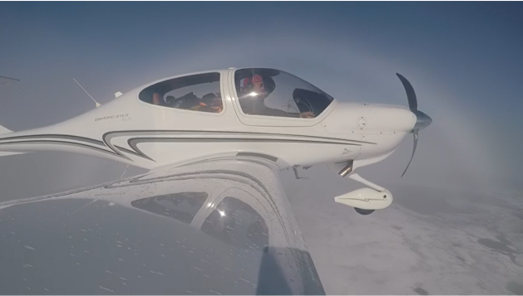
Some things you can do:
- Check your OAT (Outside Air Temp) on a regular basis. You might be picking up ice….it starts small, look for rivets, edges or antennas. Ice could look like water droplets at first…(clear ice).
- Use pitot heat, even when flying VFR. Turn it on just before take-off and then turn off after landing.
- When ice is encountered take immediate action to move yourself outside of icing zone.
Staying warm – beware of Carbon Monoxide poisoning
Your cabin heating system is critical to staying warm and enjoying every flight. Beware of the hazard of Carbon Monoxide poisoning – get your system checked by maintenance before the winter season actually starts.
CO – The silent killer:
Carbon monoxide (CO) is an invisible, odourless, colourless gas. It is a by-product of incomplete combustion of fossil fuels but you can’t detect it without specific instrumentation. Though most exhaust systems adequately vent exhaust gasses well away from the cabin, there always remains a risk of seepage into the cabin to affect the pilot(s) and passengers. Because many GA aircraft are flown solo, incapacitation by CO carries an even greater risk.
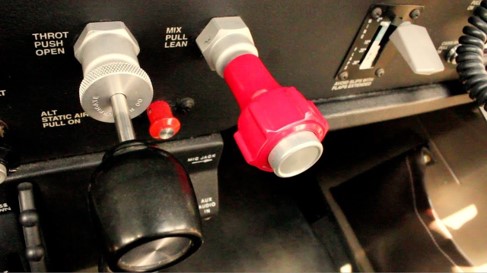
High concentration of CO occurs in piston engine exhaust gas if the mixture is rich (there is hardly any CO when running LOP). When the mixture is (full) rich, there is basically not enough air to burn all the fuel completely. Therefore it occurs mainly during phases of flight when the mixture is rich….(taxi – if you don’t lean for ground ops - , engine run-up, take-off, en-route climb, landing, …)
Sources of CO in the aircraft cabin:
These are the main sources of CO in the cabin so pay attention to these during the winter especially:
- Exhaust cracks from poor fitting components or long-term wear.
- Inadequate firewall sealing or cracks/gaps from age.
- Cracks in heating baffles and ram air heating systems.
- Bleed air or air conditioning systems.
- Inadequately sealed landing gear wells or cabin doors.
- Intake in vents from another aircraft during taxi and ground operations
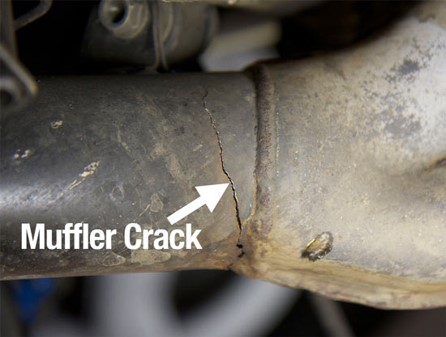
Recognise the Symptoms:
It is important to recognise the symptoms and act quickly if you identify them.
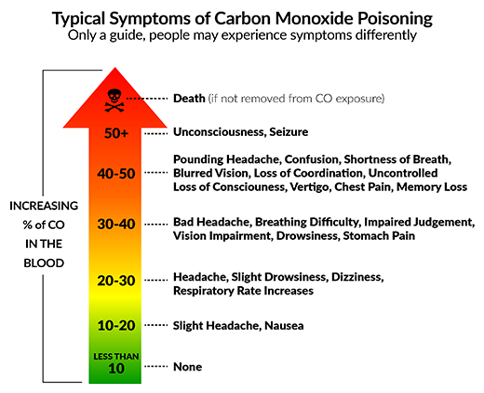
Detection is the best prevention:
Because pilots and passengers can’t rely on detecting CO poisoning symptoms on their own, a reliable Carbon Monoxide detector is the only way to prevent CO poisoning. While chemical spot detectors are better than nothing, an electronic device is the best way to protect yourself and your passengers.
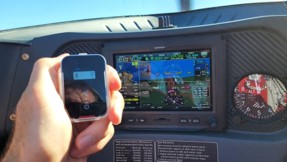
CO Alarm Emergency Checklist:
If you have a CO Alarm and it goes off, here is a handy emergency checklist (available in PDF to download at the bottom).
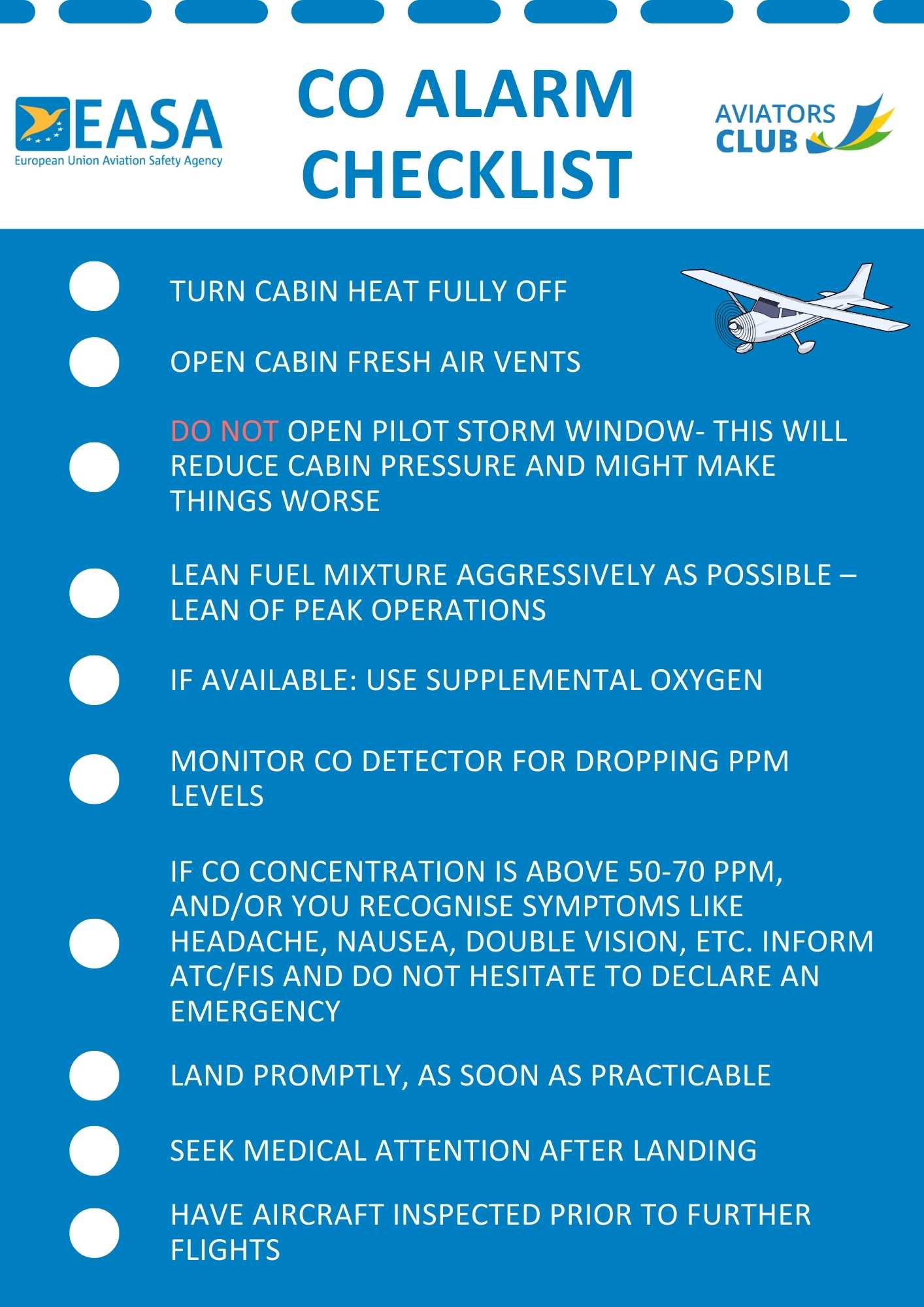
Ready to Fly
So now you are ready to fly and enjoy the winter. Ultimately, winter flying is all about assessing and managing risk. With the right kind of preparation and mindset, flying can be as safe and enjoyable as during summer time!
Hopefully these winter flying tips were useful and interesting. You probably have some tips of your own so add them in the comments to the article and we can include them in our promotional material. Have a great flight.
Please log in or sign up to comment.